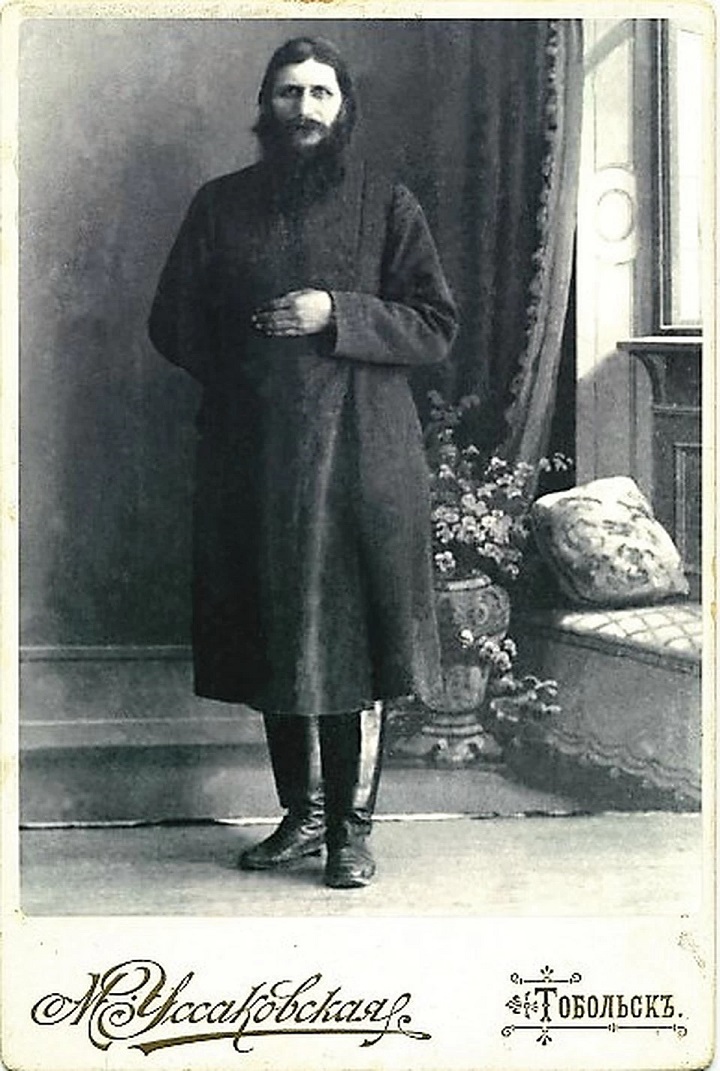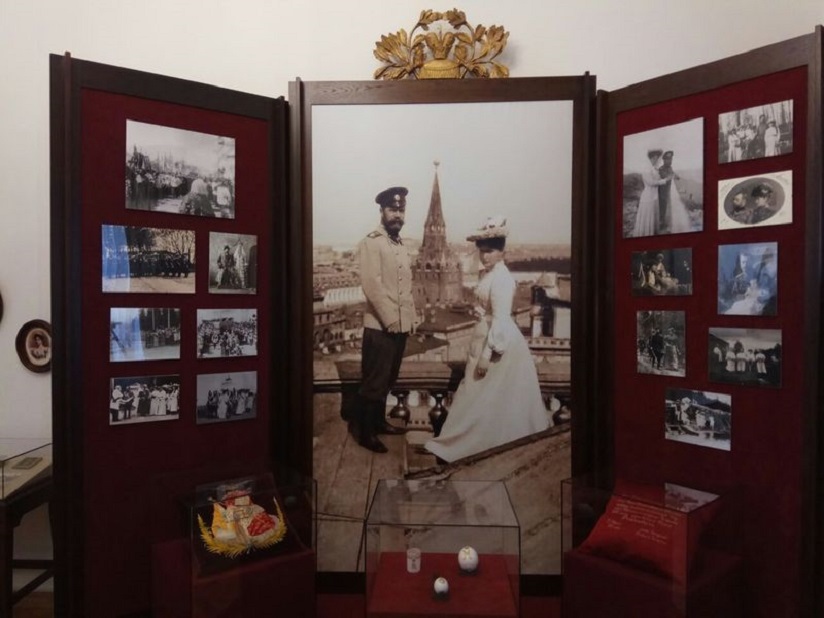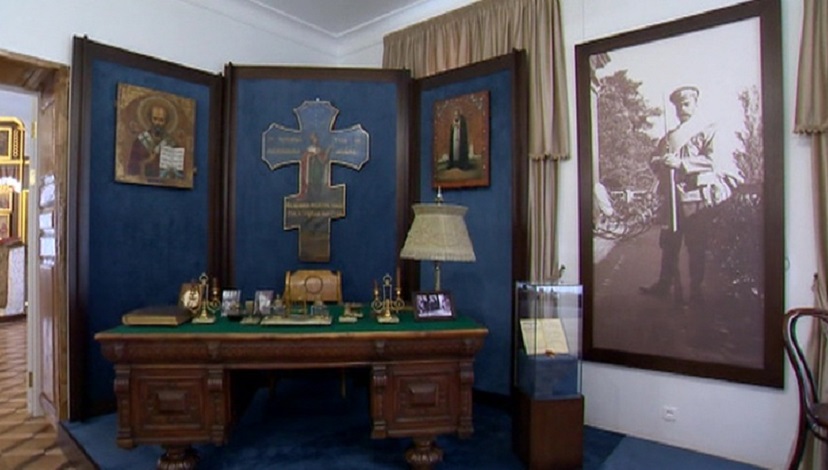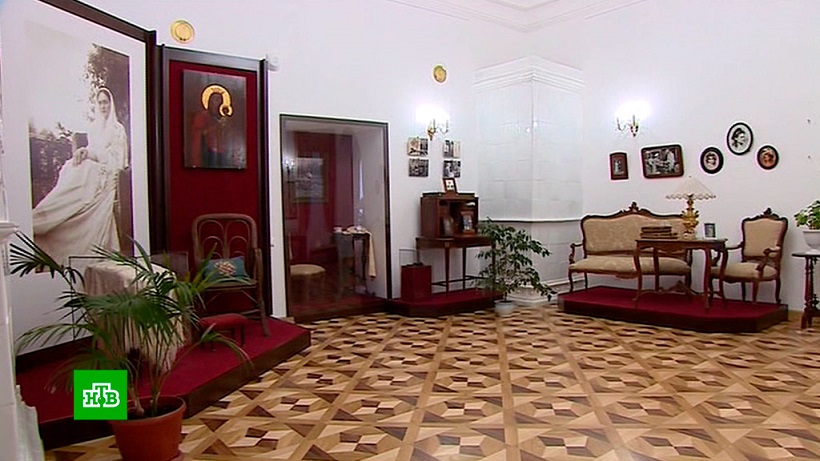Video tour of the Museum of Nicholas II and his Family in Tobolsk
A new video of the Museum of the Family of Emperor Nicholas II in Tobolsk was released last week, which gives those of us who cannot travel to Russia at the present time, a wonderful opportunity to see the interiors and exhibits featured in the former Governor’s House, where the Imperial Family were held under house arrest from August 1917 to April 1918.
The commentary is in Russian, however, this should not stop those who do not understand the language from viewing this interesting tour.
Below, I have provided notes on some of the more interesting exhibits and interior details featured in this video tour. The times noted below indicate the location of the detail in the video:
The video opens with host Andrei Smirnov walking through the historic area of Tobolsk – the former capital of Siberia.
At 0:31 – Andrei Smirnov turns and points to the Kremlin.
At 0:45 – Andrei enters through the entrance to the former Governor’s House. The wooden fence has recently been recreated around the property, which provides visitors with a more accurate historic recreation of what the Imperial Family saw when they were permitted outside for walks and exercise.
At 1:15 – Andrei enters the Governor’s House, which is today known as the Museum of the Family of Emperor Nicholas II. Inside he meets Andrei Ivanov, who serves as a guide for groups visiting the museum.
At 1:45 – a full view of a scale model of the Governor’s House and grounds.
At 2:05 – tiny figures of Nicholas II and his children, sitting outside the Governor’s House, while being photographed. At 2:30, you can also see the tiny figures of some of the Imperial Family’s retainers crossing over a wooden walkway leading from the Kornilov House to the Governor;s House.
At 2:07 – a view of the main entrance to the Governor’s House (right), the greenhouse (left) and a partial view of the garden that the Imperial Family used to walk and exercise. The garden was surrounded by a wooden fence.

PHOTO: Emperor Nicholas II and Empress Alexandra Feodorovna seated on the balcony located above the entrance to the Governor’s House.
At 2:09 – the camera zooms in to the entrance and the balcony, situated on the upper floor. It was here that the Imperial Family would sit and watch the town’s residents pass by on a daily basis. Many of them would stop and make the sign of the cross and bowing towards the Imperial Family. It was on this balcony in what is believed to the last photograph (above) of Nicholas II and Alexandra Feodorovna was taken in early 1918.
At 2:11 – a scale model of the Kornilov House, situated across the street from the Governor’s House. It was here, that most of the Imperial Families servants and retirnue were housed.
At 2:27 – the garden appears much larger in the scale model than it does in vintage black and white photographs. The Emperor enjoyed all forms of physical exercise and activity. He spent much time in this garden, sawing and chopping wood, he even dug a small duck pond.
At 2:42 – the Dining Room, where the Imperial Family along with several of their faithful retainers dined together. A photograph shows where each of them sat during meals. The photographs on the table show who sat where.
At 3:00 – vintage photographs of the Imperial Family dining together in Tobolsk during their house arrest, as well as during happier times at Tsarskoye Selo, Livadia, even the Imperial Yacht ‘Standart‘. While at home, they did not dine surrounded by opulence and splendour, as did their ancestors, nor did they eat gourmet meals. Instead they enjoying more simple Russian and English fare. For instance, in happier times, afternoon tea usually consisted of nothing more than fresh bread with butter and a few biscuits.
At 3:43 – a beautiful tablecloth protected under glass, bearing the monogram of ‘Nikolai Alexandrovich’, made by the monks of a local monastery.
At 4:04 – account books and invoices which kept a record of the expenses for food and other essential items used by the Imperial Family. On display are receipts for “milk, cream, bread and Porcini mushrooms . . .”
At 4:25 – in recent years, a memorial plaque dedicated to the Imperial Family has been installed on the façade of of the Museum of the Family of Emperor Nicholas II in Tobolsk.
PHOTO: scale model of the Kornilov House, as seen in the video
At 4:27 – Andrei and the museum guide ascending the original staircase to the upper floor, where the Imperial Family slept.
At 4:50 – the staircase leads directly into the former Study of Emperor Nicholas II, who spent a lot of time here writing and reading.
At 5:09 – a piano which Empress Alexandra Feodorovna and the grand duchesses enjoyed playing in the evenings.
At 6:03 – Empress Alexandra Feodorovna’s room, where she spent much of her time doing embroidery and needlework, reading her books on religion, and resting. The original stucco ceiling has been preserved, it was cleaned and painted, however, one corner of the historic look can still be seen.
At 6:17 – this white natural silk shawl belonged to Empress Alexandra Feodorovna. The Empress’s wardrobe included several Manila shawls, one of which has been preserved to the present day and now in the collection of the museum.
At 6:39 – iconic photographs which depict Nicholas II and Alexei sawing and chopping wood in the garden, which supplied the Imperial Family with firewood during the cold Siberian winter of 1917/1918.
At 7:06 – the grand duchesses bedroom, which is filled with photographs of how they lived at both Tsarskoye Selo and Tobolsk.
At 7:28 – vintage photos of how the grand duchesses room looked during their stay decorate the wall. A folding army cot similar to what the grand duchesses slept stands against the wall.
At 8:11 – the bell tower of a nearby church is seen from a window of the upper floor, however, this is not the Church of the Annunciation of the Blessed Virgin, where the Imperial Family were temporarily allowed to walk to and worship in. This church was demolished by the Soviets in 1956.
At 8:44 – contemporary view of the facade of the former Governor’s House, now the Museum of Nicholas II and His Family, and a partial view of the recently reconstructed wooden fence which surrounded the house and grounds, where the Imperial Family were held under house arrest fromAugust 1917 to April 1918.
© Paul Gilbert. 30 April 2024
FURTHER READING:
*You can order this title from most AMAZON outlets, including
the United States, United Kingdom, Canada, Australia,
France, Germany, Spain, Italy, Netherlands, Poland, Sweden and Japan
*Note: prices are quoted in local currencies
CLICK HERE TO ORDER THE PAPERBACK EDITION @ $17.99 USD
English. Paperback. 246 pages with more than 80 Black & White photos
In August 1917, Russia’s last Tsar, his family and their retinue of faithful servants and retainers were exiled to Tobolsk in Siberia, where they were held under house arrest until April 1918.
The seven chapters in this book explore the eight months that the Imperial Family spent in captivity in the former mansion of the regional governor.
This book features the first Enlgish translations of Eugene Kobylinsky’s interrogation and Vasily Pankratov’s recollections, which provide twp very different eye witness accounts of the Tsar and his family.
In addition are chapters on the woman who photographed the Imperial Family in Tobolsk, the fate of the church where they worshipped, and the fate of both the Kornilov and Governor’s Houses.
This is the first book dedicated entirely to the Imperial Family’s stay in Tobolsk to be published in English.


























You must be logged in to post a comment.